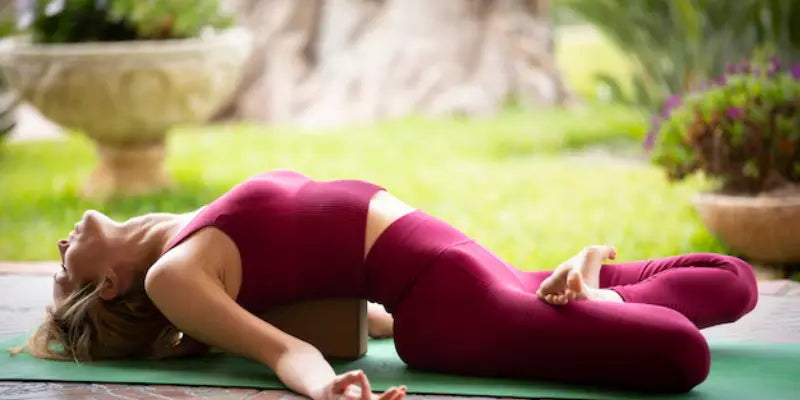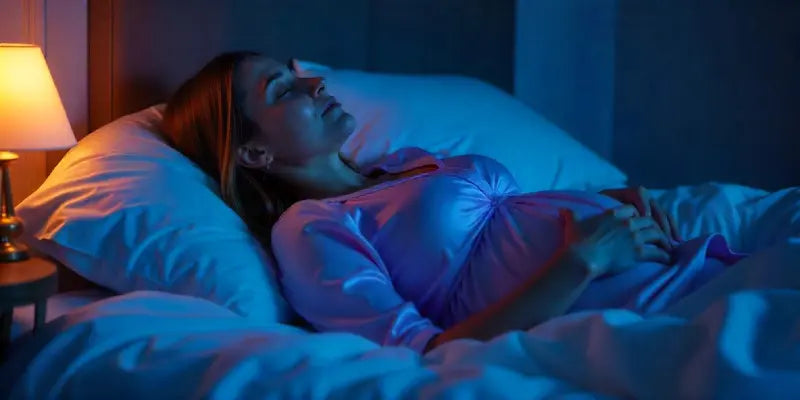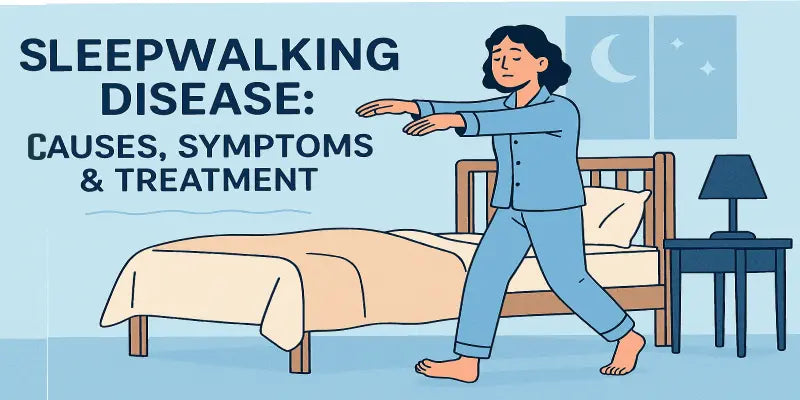
Yoga Asanas for Better Sleep
You are tired and want to fall asleep as soon as possible. You thought of scrolling instagram for some time and then realized it was almost 11:00 p.m. You put your phone down, hoping to fall asleep, but sleep is nowhere in sight. You find yourself tossing and turning in an effort to catch up on sleep. Even if you are sleepy, you are unable to fall asleep. If this is the case for you, you should try yoga for better sleep.
Regular yoga practice has been shown to aid with a variety of conditions, including insomnia and aberrant sleeping patterns. Yoga is a good combination of breathing and movement, which means it's not only terrific for exercise but also has the potential to soothe your mind and body.
Good sleep is really important, and you can get it by practicing yoga. You don't need to spend much time on it; simply 20-30 minutes from your busy schedule would suffice.
Yoga Poses to Try Before Bed for Better Sleep
These positions are simple and beginner friendly, so anyone can do them. While transitioning between these positions, keep your attention on your breathing and where you feel the most stress in your body. If you're feeling uncomfortable, breathe and try to relax. Practice these poses for 20 to 30 minutes before going to bed.
1. Child’s Pose or Balasana

The child's posture, or Balasana, is a kneeling position. It extends your lower back and reflexes throughout your body. Begin this pose by kneeling or going on your hands and knees. Tuck your feet under your hips and keep your head close to the earth. Spread your hands out in front of you to stretch your spin. The further you extend, the better the stretch will be for you.
Benefits of Child's Pose or Balasana
- It soothes the body and mind.
- Increase blood circulation.
- Reduce lower back pain concerns.
2. Standing Forward Bend (Hastapadasana)

Uttanasana is an ideal pose for people who suffer from insomnia problem or headaches. Fold your chest to the ground, touch the floor, and bend your arms, clutching the opposing hand to the opposite elbow. Perform this asana with your legs 6 inches apart and swaying slightly from side to side while inhaling.
Benefits of Hastapadasana
- Increases flexibility in the hip joints and spine.
- stimulates the abdominal organs.
- Can help alleviate stress and weariness.
- Improves digestion.
3. Supta Baddha Konasana / Reclined Butterfly Pose
The Butterfly pose is also called Baddha Konasana or Titli asana. This asana may help to relieve back strain while also relaxing the body and mind. It also resembles a butterfly fanning its wings, hence the name butterfly position.
Straighten your posture while seated, and press the bottoms of both feet together. Placing your hands on your feet, try to press your hips as low as possible to the earth. The stretch increases as you move lower. If you want more of a challenge, bring your feet closer to your body.
Benefits of Butterfly Pose
- It stimulates the kidney and urinary bladder meridians.
- Reduces stress and relaxes the mind.
- Increases hip mobility.
4. Anulom Vilom (Alternate Nostril Breathing)

Anulom Vilom is an alternate nostril breathing method that helps regulate blood pressure and relaxes the neurological system. To begin, sit in a comfortable position. With your right hand, fold your middle and index fingers toward your palm. Put your thumb on the right nostril and your ring finger on the left nostril. Close your right nostril with your thumb, then slowly and thoroughly inhale through your left nostril until your lungs are full. Concentrate on your breathing. Next, release your thumb and use your ring finger to seal your left nostril. Exhale slowly from the right nostril. Now try it in reverse, breathing through the right nostril and expelling through the left.
Benefits of Anulom Vilom
- Helps with balancing
5. Corpse Pose (Shavasana)

This is known as corpse posture because the practitioner lies face up on the ground with their arms and legs comfortably spread and their eyes closed. The pose's objective is to relax the mind and body, relieve stress, and ground the body.
Benefits of Savasana
- Reduce tiredness.
- Increase focus and concentration.
- Boost energy, mood, and self-confidence.
6. Crocodile Pose (Makarasana)

Makarasana, also known as the crocodile pose, is a deeply calming technique in which you lie on your belly with your arms crossed under your head. Rest the forehand on your wrists, then turn out your heels and let your legs flop apart. Close your eyes and allow your body to fully relax.
Benefits of Makarasana
- Helps to cure slip disc, spondylitis, and sciatica.
- Rejuvenates the body.
- Helps cure asthma
7. Legs up the wall (Viparita Karani)
A comfortable position for returning blood to the heart, inducing relaxation and improving blood circulation. All you have to do is flip your legs up to allow blood to flow back to your heart. The technique promotes calm and reduces anxiety. For optimal effects, practice the stance for at least 5 minutes, using a pillow and closing your eyes if necessary.
Benefits of Viparite Karani
- The position promotes better sleep.
- Relax your feet and relieve leg pain.
- Relief for slight back pain.
- Calms the neurological system and relieves tension and anxiety.
Conclusion
Yoga can help you control your anxiety, especially before bedtime. Deep breathing exercises can stimulate your body's relaxation response, reducing stress and anxiety. Yoga poses that emphasize grounding and stability can help settle a restless mind, making it an excellent tool for improving sleep and relieving anxiety.
If you're still having trouble sleeping after trying these yoga asanas, it's possible that the problem is with your mattress or pillow. Undoubtedly, unlike other pillows, this memory foam pillow is committed to giving its consumers the greatest possible sleeping experience. This cushion is exceptional in terms of durability and efficiency. You can use a Sleepsia contour pillow to see the difference in your own sleep.








